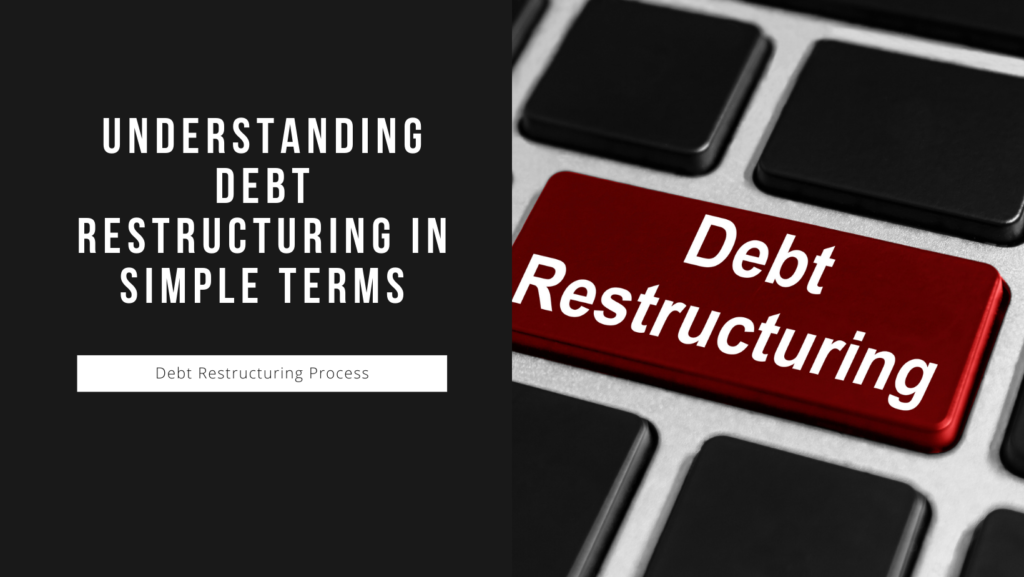Are you feeling like you’re swimming in a sea of debt with no lifeboat in sight? The waves of financial burden can be overwhelming, but there might be a solution that could help you stay afloat: debt restructuring. It’s like a financial life preserver that could change the terms of your loan agreement, making it easier for you to manage those monthly payments. But what exactly is debt restructuring, and how does it work? Let’s dive into the details to see if this could be the lifeline you need to get back on solid financial ground.

What is Debt Restructuring?
Imagine a scenario where you’re struggling to juggle various bills, deciding which to pay first and which to postpone. This financial tightrope can lead to missed payments, damaging your credit and piling on penalty fees. In times of significant hardship or if you’re already falling behind on payments, creditors might extend an unusual offer: debt restructuring. This process, also known as troubled debt restructuring, involves altering your loan agreement to better align with your current financial situation.
Types of Debt Restructuring:
- Loan Modification: Adjusting terms such as interest rates or repayment schedules.
- Payment Deferral: Allowing a temporary pause on payments without penalties.
- Extending the Loan Term: Offering a longer period to repay, resulting in lower monthly payments.
- Adjusting the Balance Due: Modifying the total amount owed.
- Waiving Penalty Fees: Removing existing penalties.
- Reducing the Interest Rate: Lowering the cost of borrowing.
The type of restructuring available to you often depends on the nature of your debt. For instance, a mortgage may offer an extended loan term, while a credit card might involve adjusting interest rates and waiving penalties.
Pros and Cons of Debt Restructuring
Pros:
- Debt Relief: Restructuring can provide relief, reducing interest rates, waiving fees, or even cutting down the total amount owed.
- Avoiding Loan Default: Restructuring can prevent default, saving you from closed accounts, additional penalties, and a tarnished credit report.
- Accessible Regardless of Credit: Unlike traditional loans, debt restructuring doesn’t always require excellent credit, making it more accessible.
Cons:
- Credit Damage: Debt restructuring can negatively impact your credit, especially if marked as settled for less than the original amount.
- Not Guaranteed: Creditors aren’t obligated to offer restructuring options, making it uncertain whether this path is available to you.
- Time and Effort: The process can be lengthy and demanding, involving negotiations with creditors to find a viable plan.
How Does the Debt Restructuring Process Work?
So, you’ve weighed the pros and cons and decided that debt restructuring is your best bet. Here’s a step-by-step guide:

- Assess the Situation: Review your financial records, outstanding debts, and monthly expenses.
- Calculate Affordability: Determine how much you can reasonably allocate toward debt repayment each month.
- Contact Creditors: Proactively reach out to lenders, informing them of your financial challenges.
- Weigh Options: Evaluate offers, such as temporary hardship assistance or specific restructuring proposals.
- Negotiate: Engage in discussions with your lender to refine the terms, aiming for lower payments or waived fees.
- Accept New Terms: If an agreement aligns with your financial capabilities, formally accept and sign the new terms.
How Much Average Debt American Has in 2023
Alternatives to Debt Restructuring
Still unsure if debt restructuring is your best route? Consider these alternatives:
- Debt Consolidation: Take out a new loan or line of credit to pay off existing debts, ideally with more favorable terms.
- Refinancing: Replace an existing debt with a new loan if your credit has improved or interest rates have dropped.
- Debt Management Plan: Work with a nonprofit credit counseling organization to negotiate lower interest rates and payments on unsecured debts.
- Loan Forbearance or Deferment: Temporarily skip payments without penalties, suitable for temporary setbacks.
- Chapter 7 Bankruptcy: If all else fails, consider bankruptcy for a fresh start, though it comes with significant credit score consequences.
In the complex world of finance, understanding your options is crucial. Debt restructuring might be the lifeline you need to navigate these troubled waters, but it’s essential to weigh the pros and cons and explore alternative routes before making a decision. Remember, your financial well-being is worth the effort, and there are tools available to help you find stability. So, take charge of your financial future, and let’s steer towards calmer financial seas together.
